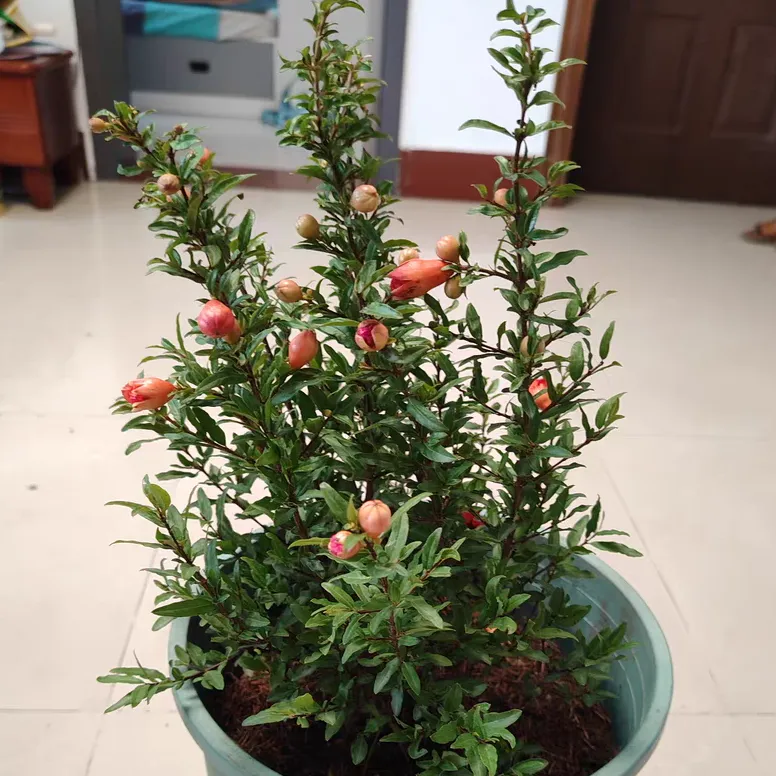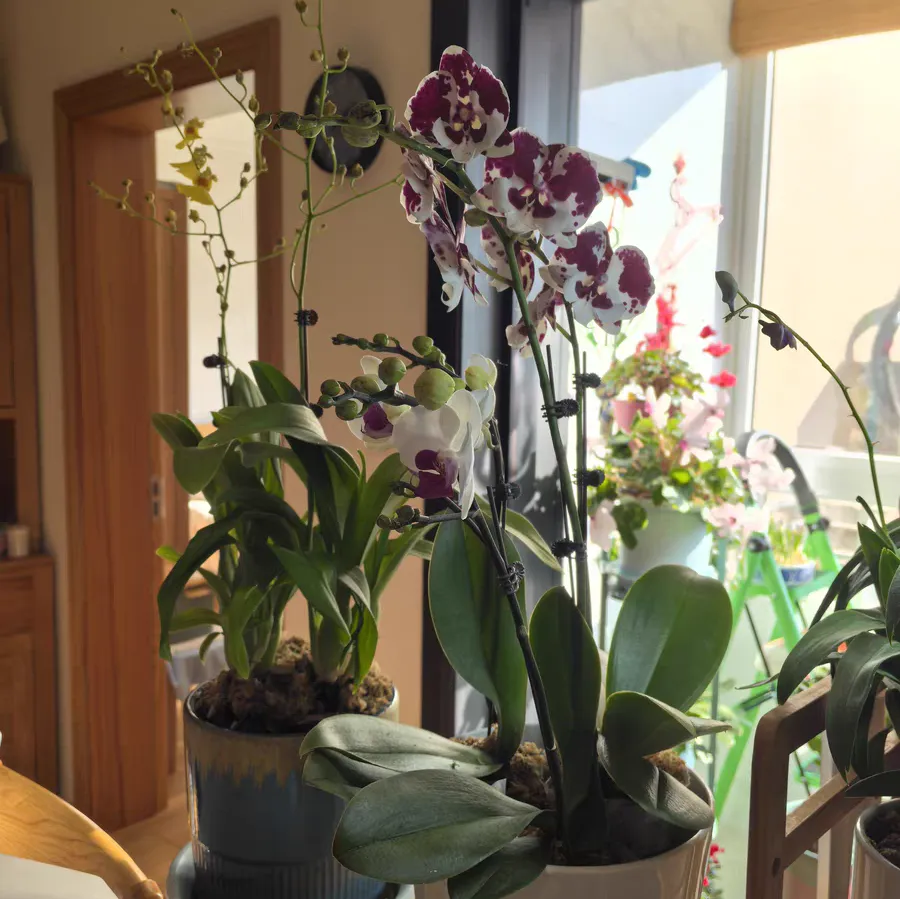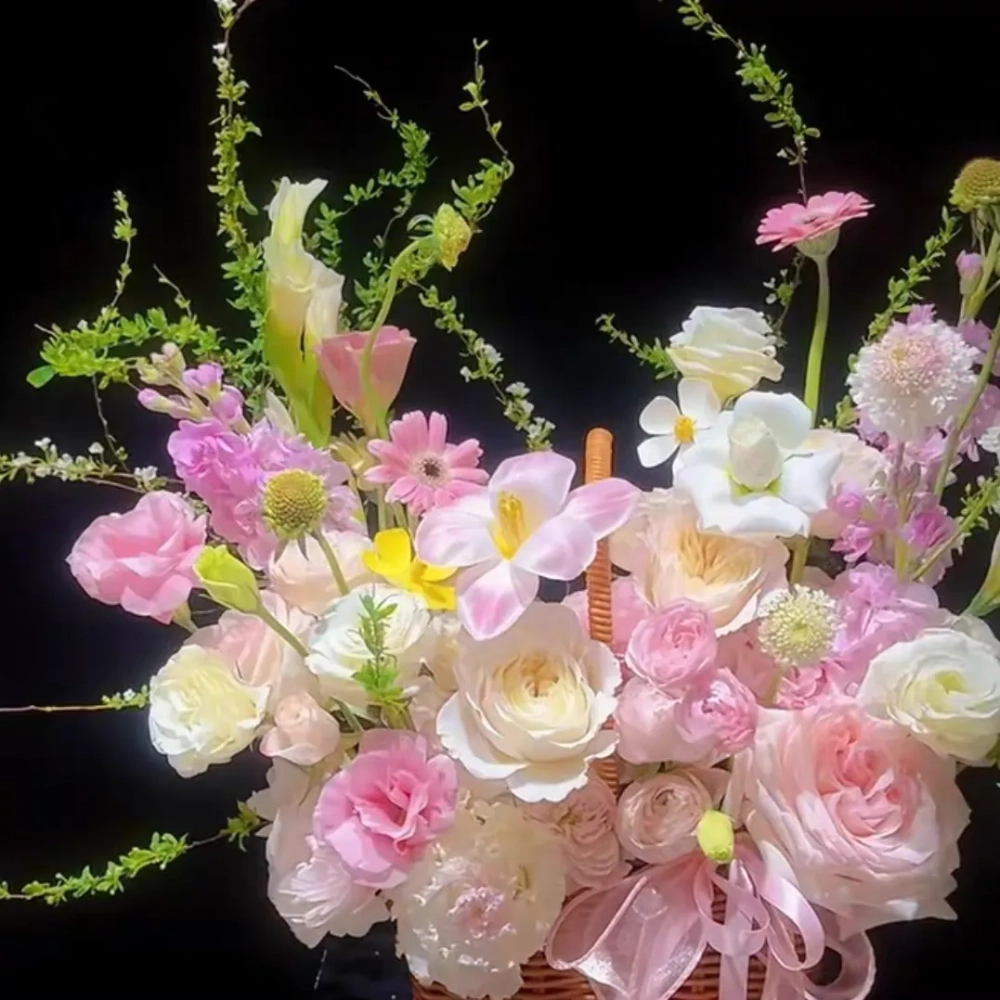Potted pomegranate plants are 30 - 150 centimeters in height. Their branches are simple, unsophisticated and vigorous. The leaves are slender and tough. The flowers look like small trumpets, and most of the petals are red, while some are white or pink, with a soft and light texture. The fruits are 5 - 10 centimeters in diameter. When ripe, the outer skins are red or yellow, smooth, shiny and speckled. The seeds are like rubies, plump, juicy, sweet and sour, and rich in various nutrients and have medicinal value.
In terms of cultivation, it prefers充足的阳光 (abundant sunlight), a warm and humid environment, and is drought-tolerant and cold-resistant. It doesn't have high requirements for soil. Loose, fertile and well-drained sandy soil is preferable. For maintenance, watering should follow the principle of "watering when the soil is dry and stopping when it's wet". During the vigorous growth period, apply a thin liquid fertilizer once every one or two months. Prune regularly to maintain its beauty and ensure good ventilation and light transmission.
During daily maintenance, the top of the potted pomegranate may wither. Improper watering is a common cause. Excessive watering will lead to oxygen deficiency in the roots and root rot, resulting in water shortage and withering at the top. Insufficient watering will make the plant prioritize supplying the bottom roots due to soil drought, causing the top to lack water and wither. Therefore, the watering should be adjusted to follow the principle of "watering when the soil is dry and stopping when it's wet". If the roots are rotten, they should be pruned, disinfected and replanted. Excessive or insufficient light can also cause problems. Strong light can burn the leaves at the top, while insufficient light will make the plant grow poorly and the branches and leaves at the top turn yellow and wither. The light should be adjusted according to the seasons. Shade it in summer and ensure sufficient light in other seasons and turn the pot regularly. Pests and diseases, such as pomegranate dry rot and aphids, will damage the plant tissues and nutrient transmission. Diseased branches and leaves should be pruned in time, and corresponding pesticides should be sprayed for prevention and control. Meanwhile, maintenance should be strengthened to enhance the plant's resistance to pests and diseases.
In winter, due to the low temperature, special attention should be paid to the maintenance of potted pomegranates. The cold tolerance of pomegranates is limited, and the roots of potted plants are restricted, so they need more warmth. The indoor temperature should be kept at 0 - 5℃ to prevent the plant from sprouting too early due to high temperature and consuming nutrients or being damaged by freezing due to low temperature. Move it to a place indoors with sufficient sunlight and a stable temperature. If necessary, wrap the flowerpot or build a simple greenhouse. Watering should be controlled. As the growth is slow and the evaporation is small, reduce the frequency and keep the soil slightly wet. Water at noon on sunny days and make sure the water temperature is close to the room temperature. Stop fertilizing in winter. Wait until the spring temperature rises and the plant sprouts, and then fertilize according to the situation to promote growth. In this way, the potted pomegranate can safely survive the winter and regain its vitality and charm in the coming year.
What should I do if the top of the potted pomegranate is withered?

Share with
Tagged in :




Leave a Reply